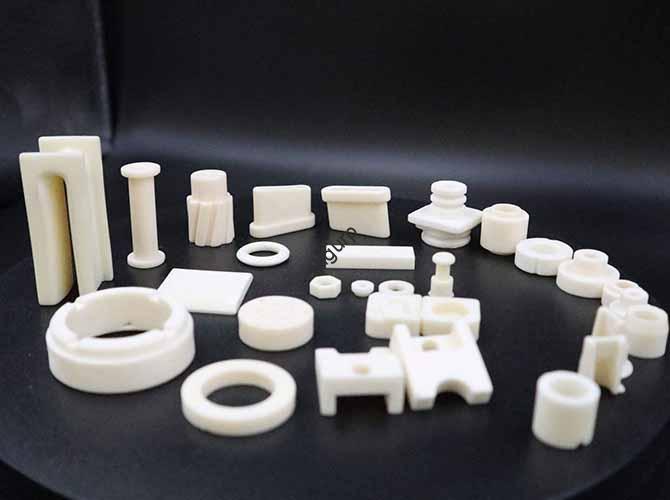Ever looked at a 3D-printed object—like a custom phone case or a medical model—and thought, “I could never do that”? You’re not alone. Many people assume 3D Impression is overly complex, mais la vérité est: c'est simple pour commencer, mais s'approfondit à mesure que vous le maîtrisez. This guide breaks down the complexity of 3D Impression step by step, afin que vous puissiez décider si cela vous convient.
1. Les bases de l'impression 3D: Surprenant simple à démarrer
Si vous êtes nouveau sur3D Impression, vous serez soulagé de savoir que les étapes fondamentales sont simples : aucun diplôme d'ingénieur avancé n'est requis.
3-Flux de travail pour débutants
- Obtenez un modèle 3D: Utilisez des outils de conception gratuits (Par exemple, Tinkercad, ce qui est aussi simple que de faire glisser des formes) ou téléchargez des modèles prédéfinis à partir de sites comme Thingiverse.
- Découper le modèle: Utiliser le logiciel de tranchage (Par exemple, Traitement, qui a des paramètres prédéfinis pour les débutants) pour convertir le modèle en instructions que l'imprimeur comprend.
- Appuyez sur Imprimer: Chargez le bon matériel (comme PLA, un plastique adapté aux débutants), appuyez sur "démarrer," et laissez l'imprimeur faire le travail.
Think of it like making coffee with a pod machine: You don’t need to grind beans or measure water—just pop in a pod and press a button.3D Impression basics are that intuitive.
Par exemple: A hobbyist can print a keychain in 2 hours using a $200 Imprimante FDM, following only 10 minutes of setup. That’s how simple the entry level is.
2. Quand l’impression 3D devient-elle complexe? Principaux défis à connaître
While beginners can start easily, 3D Impression becomes more complex as you tackle advanced goals. Below are the four main areas where complexity grows—along with how to manage them.
Répartition de la complexité: Débutants contre. Avantages
| Aspect | Beginner Level (Simple) | Professional Level (Complexe) |
|---|---|---|
| Sélection de l'équipement | Choose a pre-assembled FDM printer (Par exemple, Ender 3) with ready-to-use settings. | Select specialized printers (Par exemple, SLA for resin models, SLS pour pièces métalliques) and calibrate advanced parameters. |
| Material Use | Stick to PLA (facile à imprimer, no special heating needed). | Work with ABS (requires heated enclosures) or metal powder (needs industrial-grade safety gear). |
| Post-traitement | Remove basic support structures with pliers. | Sable, peinture, or polish parts to meet industry standards (Par exemple, medical devices need sterile finishing). |
| Design Needs | Use pre-made models or simple Tinkercad designs. | Créer des géométries complexes (Par exemple, composants aérospatiaux) and optimize for strength/weight. |
Question: Why does this complexity exist?Répondre: Because professional fields (like medical or aerospace) have strict rules—e.g., a 3D-printed hip implant must be 100% accurate to avoid patient harm. This requires more skill than printing a hobbyist figurine.
3. Exemples du monde réel: La complexité en action
Comprendre3D Impression complexity better, let’s look at two real scenarios—one simple, one complex.
Exemple 1: Imprimerie amateur (Simple)
Maria wants a 3D-printed cat figurine for her desk. She:
- Downloads a free cat model from Thingiverse.
- Uses Cura’s “beginner mode” to slice it.
- Prints it with PLA on her Ender 3 printer.Total time: 3 heures (y compris 10 minutes of setup). No complexity—she didn’t even need to learn design software.
Exemple 2: Impression de modèles médicaux (Complexe)
Dr. Lee needs a 3D model of a patient’s fractured spine to plan surgery. His team:
- Uses a CT scan to create a detailed digital model (requires training in medical design software).
- Chooses a biocompatible resin (needs knowledge of material safety).
- Prints the model on an SLA printer and sterilizes it (follows strict medical guidelines).
- Checks the model’s accuracy with a laser scanner (ensures it matches the patient’s spine exactly).Temps total: 2 jours. The complexity here is necessary to keep the patient safe.
4. Coût & Efficacité: Une autre couche de « complexité »
Many people also worry about3D Impression costs and efficiency—but these are only complex if you don’t plan ahead. Let’s break it down with a simple 因果链 (chaîne de cause à effet):
- Cause: Beginners use low-cost FDM printers ($200- 500 $) and PLA ($20 par bobine). Effet: They can print small parts cheaply (Par exemple, a keychain costs ~$1 in material).
- Cause: Pros use industrial printers ($10,000+) and specialized materials (Par exemple, metal powder at $500 par kg).Effet: Costs rise, but the parts are high-value (Par exemple, a 3D-printed turbine part saves aerospace companies $10,000 in traditional manufacturing costs).
Mythe: 3D printing is always slow.Fait: Pour les petits lots (1–10 pièces), it’s faster than traditional manufacturing. Pour la production de masse (1,000+ parties), it’s slower—but that’s a limitation, not a complexity.
5. Perspective de la technologie Yigu
À la technologie Yigu, nous croyons3D Impression’s “complexity” is a strength, not a flaw—it lets beginners start simple while pros tackle high-impact projects. We’ve helped small businesses go from basic FDM printing to professional resin models by providing easy-to-follow guides and calibrated equipment. Notre conseil: Start small (print a keychain or phone stand) to build confidence, then gradually take on more complex tasks.3D Impression doesn’t have to be complicated—you just need the right tools to grow at your own pace.
FAQ
- Q: Do I need to learn coding or design to start 3D printing?UN: Non! Beginners can use pre-made models (from sites like Thingiverse) and slicing software with one-click settings. You only need design skills if you want to create custom models.
- Q: How much time does it take to go from beginner to pro in 3D printing?UN: It depends on your goals. Hobbyists can master basic skills in 1–2 months. To work in professional fields (like medical or aerospace), expect 6–12 months of training.
- Q: Is 3D printing too expensive for beginners?UN: Non. Entry-level FDM printers cost $200–$500, and PLA filament is $20–$30 per spool. You can print 10–15 small parts with one spool—making it affordable to practice.
